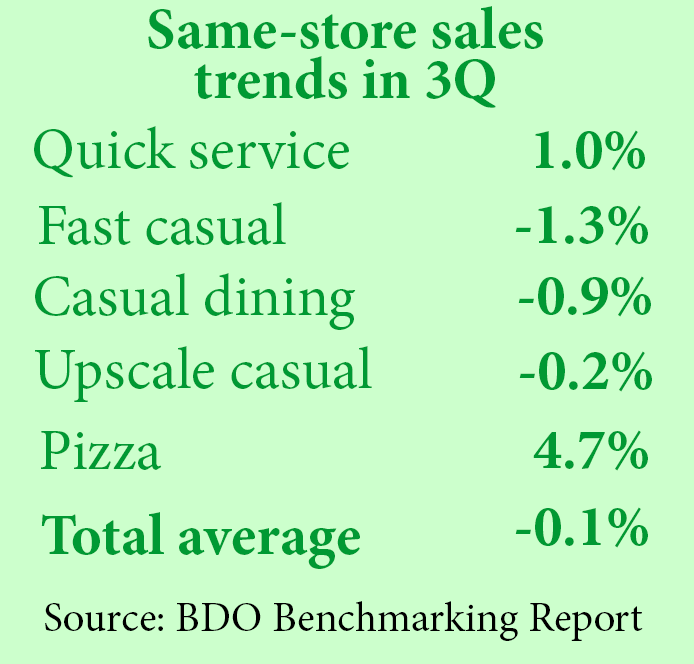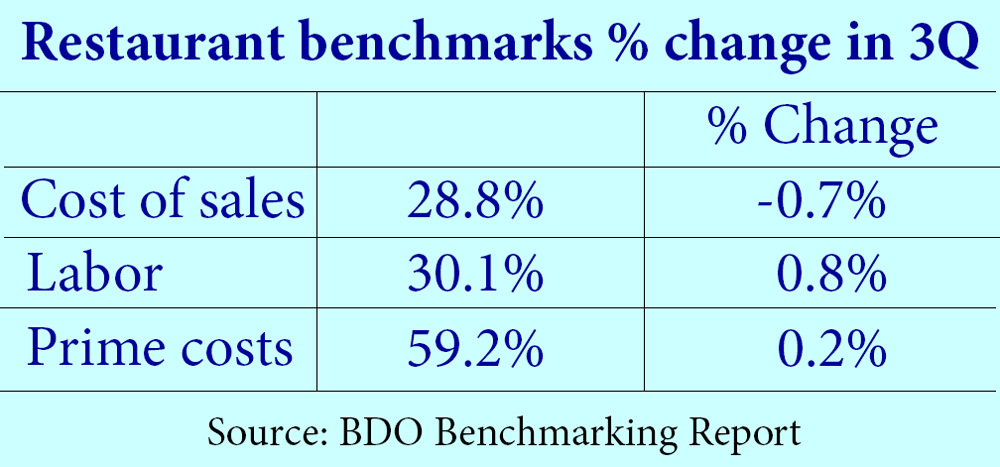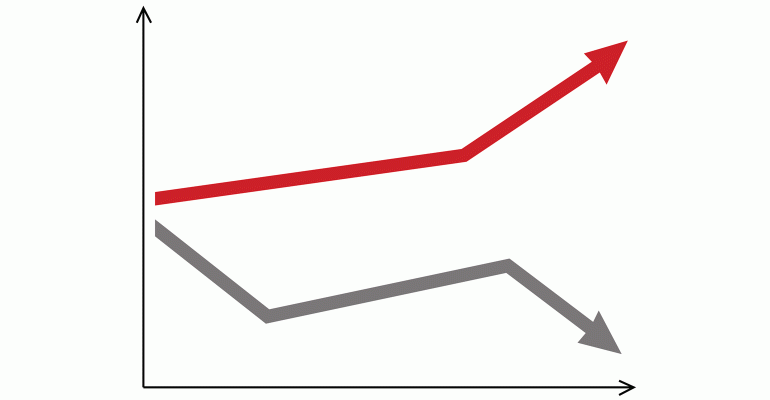 This post is part of the On the Margin blog.
This post is part of the On the Margin blog.
The third quarter was not a good one for publicly traded restaurants.
Same-store sales were weak. And profitability fell, as food costs did not fall enough to offset higher wages, according to a third-quarter Benchmarking Update from the consulting firm BDO.
Average same-store sales fell 0.1 percent in the quarter, according to BDO, which analyzes reports from publicly traded restaurants to produce the update.
Leading the industry was the pizza segment, where same-store sales averaged 4.7 percent in the quarter, led by the 13-percent same-store sales increase at Domino’s Pizza Inc. — the best performance of the quarter by far.
On the other end was the fast-casual segment, where average same-store sales fell 1.3 percent. But that, too, included an outlier in Chipotle Mexican Grill Inc., where same-store sales declined 21.9 percent. Take out Chipotle, and the segment’s average same-store sales increased 0.9 percent.

Quick-service same-store sales averaged 1 percent in the quarter, but every other segment recorded declines, including a 0.9-percent drop in casual dining and a 0.2-percent average decline at upscale-casual restaurants.
Weak sales caused problems with labor costs as restaurants lost leverage in the quarter. Increasing wage rates, thanks to competition for labor and rising minimum wages, led to inflated labor costs.
Labor costs were 30.1 percent of sales, up from 29.3 percent in the same period a year ago.
The biggest problem was at fast-casual chains, where same-store sales were weakest and where companies have been more aggressive at increasing wages. Labor costs as a percent of sales were 28.4 percent, rising 1.5 percent from the same period a year ago.
Fast-casual chains, traditionally known for labor efficiency, were not as efficient in the third quarter as their quick-service cousins, where labor costs were 27.7 percent of sales, a 0.5-percent increase from the same period a year ago.

The industry’s big hope in recent quarters as sales weakened and labor costs rose was declining commodity costs. And they did decline, just not enough to fully offset labor costs.
Cost of sales, including food, fell 0.7 percent, to 28.8 percent, according to BDO.
Overall prime costs, food and labor, increased 0.2 percent, to 59.2 percent of revenue.
As we wrote about yesterday, things aren’t expected to change that much in 2017, except perhaps that restaurants will be even less likely to raise prices next year.
Jonathan Maze, Nation’s Restaurant News senior financial editor, does not directly own stock or interest in a restaurant company.
Contact Jonathan Maze at [email protected]
Follow him on Twitter: @jonathanmaze





